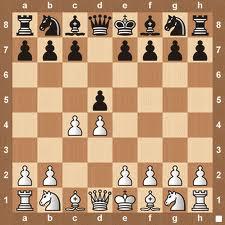
Typical Positions (Part 6)
Chess openings are a bit like fashion - they follow trends. Certain lines become popular and then just fade away. In most cases, an elite player (or most likely his team) prepares an opening for a tournament and then everyone else follows his lead. Recently, in the Queens Gambit Declined, there have been many games where black exchanging the knight for the Bf4, resulting in white having d4 and f4 pawns. This structure is typical as it can result from different closed openings and one needs to know how to play it well. Let's look at typical plans for both sides.
A recent game is from Alekhine Memorial, where Gelfand won a smooth game. Let us look at the beginning few moves until the critical position of the variation is reached:

For inexperienced players the pawn structure with d4 and f4 might not inspire too much confidence. However, these pawns represent white's advantage! They take a lot of space and do not let black to achieve the e5-break. Thus, black has a major problem to resolve - how to develop the Bc8. White has full control over the e5-square and better development, & black has to watch out for the d5-break. Let us see Adams attempt to solve black's problems.
After massive exchanges we have reached an endgame where black is worse. It seems that the bishop and pawn majority on the queenside should give black at least equality. Statically true - black should be better but dynamics do not work out for him. White is ahead in development with the rook and knight being very active. The bishop does not have good squares to retreat to. If black had a rook on d8 and a bishop on g7 then he would be better, unfortunately for him there is no time to rearrange the pieces. In the next stage of the game Gelfand further developed the initiative.
White developed pieces more or less naturally. Black solved the Bc8-problem with the Nb6-Bd7-Bc6 plan. Then followed the d5-break (with Bc6 it is especially dangerous) and piece exchanges. Black ended up in an endgame where Bd6 could not really move as the c7-pawn was a major weakness. White built-up the pieces on the d and c-files and won the c-pawn. The development of events we saw in this game is quite common as we will confirm with the next game, where black chose to develop the bishop through b7 instead.

The game followed a pattern similar to the first game, but here black is even worse because the light squares are weak on the queenside. An extra pair of knights will most likely benefit the attacking side. Notice how in this position white builds up on the c-file instead of exchanging the knight for the bishop. The problem is that if black manages to put the pawn on d5 (which would be protected by the Nf6) then it would be hard for white to capture it. Meanwhile, the c7-pawn is an easy target as it is so close to the 8th-rank.
Let us see some other games where black tries to solve the problem of the c8-bishop in other ways. In the following game black opts for a Slav-like pawn structure on the queenside.
What we saw in the game that developing bishop on b7 thorough Slav-like pawn-structure on the queenside does not solve the problem. With such a development method black has to make sure that he achieves the c5-break. However, as we saw, white had just enough time to secure the c5-square first with the rook and queen and later by planting a knight there.
The last game shows what happens if black decides not to solve the bishop problem and opts for slow and passive set-up. White decides the game with... yes, quick attack on the king.
This article wraps-up the series of articles about typical positions in 1.d4 schemes. I will announce the next series shortly, but before that we will study some examples from the US Championship which is underway in St. Louis.






